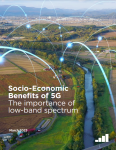Satellite to mobile phone
In the US and Canada, the telecom regulators are looking at satellite to mobile phone direct connectivity. Is there a space race underway between the FCC and CRTC?
In the past few weeks, each regulator has started to examine what the FCC is calling “innovative collaborations between satellite operators and wireless companies”.
On March 16, the FCC announced the launch of a new Notice of Proposed Rulemaking process, adding the file to the FCC’s International Bureau’s Docket 22-271. The FCC wants to establish “clear and transparent processes” to support supplemental coverage from space, such as connecting mobile consumers to emergency services via low earth orbit satellites, where no terrestrial mobile service is available.
The FCC has asked for comments on “how this framework might best support access to emergency response systems like 911 and Wireless Emergency Alerts when a consumer is connected via supplemental coverage from space.”
In early March, the CRTC sent a letter to Apple asking for information about its “Emergency SOS via satellite and Crash Detection services”. The CRTC was following up on a presentation from early last October. Rather than conducting a full public process, the CRTC targeted Apple to respond to 30 questions, including: “Explain why Apple does not consider the Crash Detection service as a telecommunications service, the provision of which in Canada could require Apple, among other things, to register with the Commission as a telecommunications service provider.”
It is interesting to see the different approaches by the Canadian and US regulators. In the US, the FCC “proposes a framework through which satellite operators collaborating with terrestrial service providers would be able to obtain FCC authorization to operate space stations on certain currently licensed, flexible-use spectrum allocated to terrestrial services.” The FCC is also looking at adding a satellite to mobile phone allocation on some terrestrial flexible-use spectrum bands.
The CRTC does not handle telecommunications spectrum allocations; that is the responsibility of ISED. As such, the CRTC is unable to consider the potential outcomes associated with satellite to terrestrial spectrum allocations. The CRTC’s interrogatories only looked at emergency access, while the FCC also plans to examine how such connectivity “can open up innovative opportunities for consumers and businesses.”
On the surface, the FCC approach appears to be more forward looking, contrasted with what I perceived to be a somewhat more challenging tone in the CRTC’s letter.
The CRTC asked Apple for a response by March 31. As a follow-up, perhaps the CRTC will work together with ISED to explore a progressive approach that advances mobile connectivity for Canadians when we are off the beaten path.

